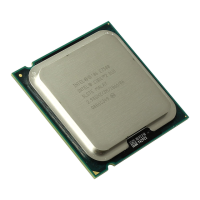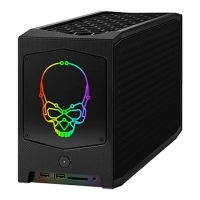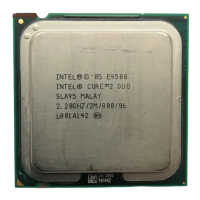EMBEDDED Intel486™ PROCESSOR HARDWARE REFERENCE MANUAL
7-10
7.1.3.3 16-Bit I/O Interface
16-bit I/O interface byte swap logic requires six 8-bit bidirectional I/O data buffers as shown in
Figure 7-5. Buffers 3 through 0 are controlled by BE3#–BE0# respectively. Buffers 4 and 5 are
monitored by BEN16#.
To transfer data on the lower 16-bits, buffers 2 and 3 are enabled. While the higher 16-bits are
transferred through Buffer 0, 1, 4, and 5.
0110
†
1111XXX
1110 1 1 1 1 X 0 0
0001 1 1 1 1 X 0 1
1001 1 1 1 0 X 0 1
0101
†
1110XXX
1101 1 1 1 0 X 0 1
0011 1 1 0 0 X 1 0
1011 1 1 0 1 X 1 0
0111 1 0 1 1 X 1 1
1111 1 1 1 1 X X X
Table 7-5. 32-Bit to 8-Bit Steering (Sheet 2 of 2)
Intel486™ Processor
(3)
8-Bit Interface
(1)
BE3# BE2# BE1# BE0# BEN16# BEN8UH# BEN8UL# BEN8H# BHE#
(2)
A1 A0
Inputs Outputs
NOTES:
1. X implies “do not care” (either 0 or 1).
2. BHE# (byte high enable) is not needed in 8-bit interface.
3.
†
indicates a non-occurring pattern of byte enables; either none are asserted or the pattern has byte
enables asserted for non-contiguous bytes.
